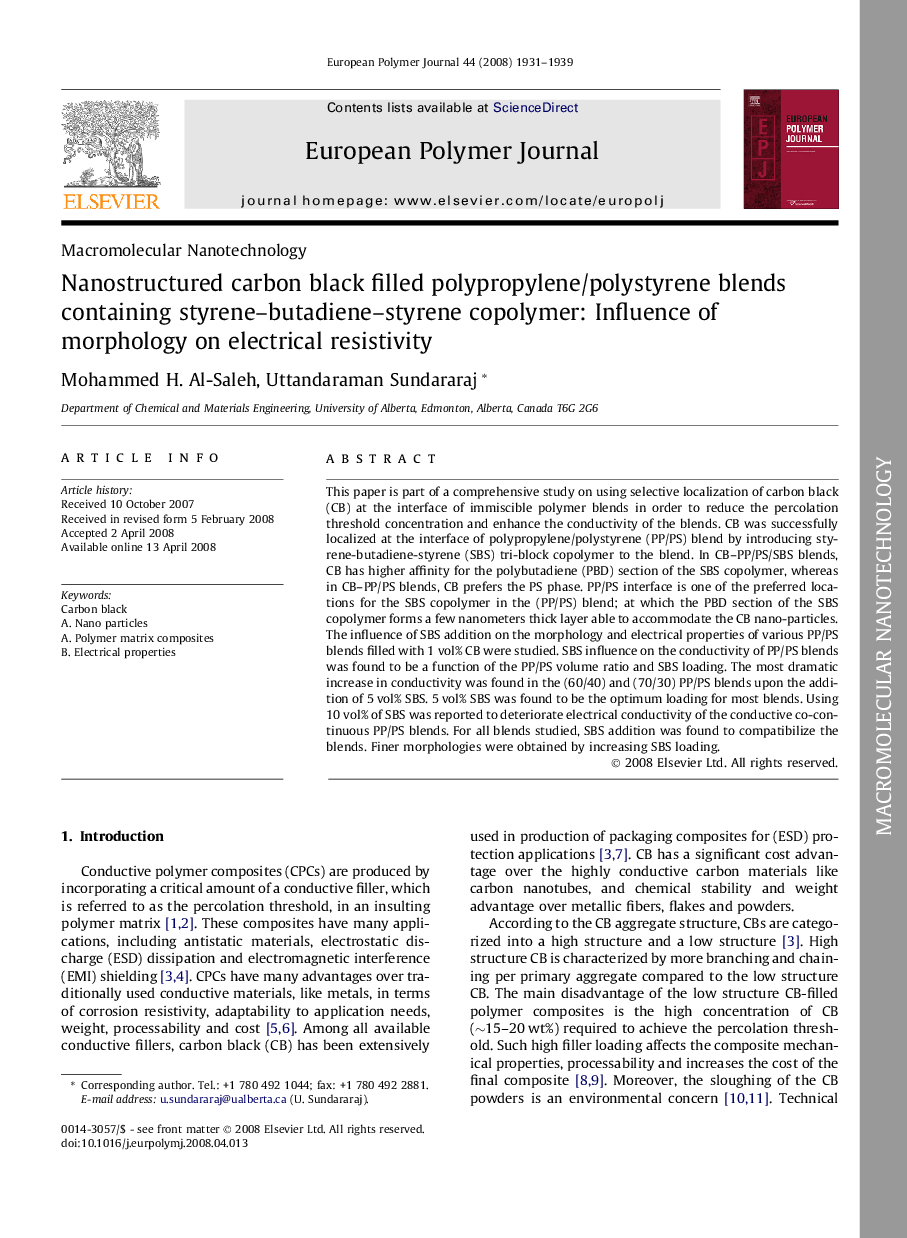| Article ID | Journal | Published Year | Pages | File Type |
|---|---|---|---|---|
| 1400096 | European Polymer Journal | 2008 | 9 Pages |
This paper is part of a comprehensive study on using selective localization of carbon black (CB) at the interface of immiscible polymer blends in order to reduce the percolation threshold concentration and enhance the conductivity of the blends. CB was successfully localized at the interface of polypropylene/polystyrene (PP/PS) blend by introducing styrene-butadiene-styrene (SBS) tri-block copolymer to the blend. In CB–PP/PS/SBS blends, CB has higher affinity for the polybutadiene (PBD) section of the SBS copolymer, whereas in CB–PP/PS blends, CB prefers the PS phase. PP/PS interface is one of the preferred locations for the SBS copolymer in the (PP/PS) blend; at which the PBD section of the SBS copolymer forms a few nanometers thick layer able to accommodate the CB nano-particles. The influence of SBS addition on the morphology and electrical properties of various PP/PS blends filled with 1 vol% CB were studied. SBS influence on the conductivity of PP/PS blends was found to be a function of the PP/PS volume ratio and SBS loading. The most dramatic increase in conductivity was found in the (60/40) and (70/30) PP/PS blends upon the addition of 5 vol% SBS. 5 vol% SBS was found to be the optimum loading for most blends. Using 10 vol% of SBS was reported to deteriorate electrical conductivity of the conductive co-continuous PP/PS blends. For all blends studied, SBS addition was found to compatibilize the blends. Finer morphologies were obtained by increasing SBS loading.
